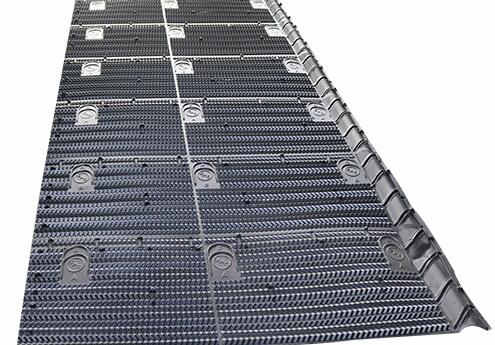Cooling Tower Fill Material: Gain a Deep Understanding
Welcome to our comprehensive guide on cooling tower fill material. In this article, we will provide you with an in-depth analysis of cooling tower fill material and its importance in optimizing the performance of cooling towers. Whether you are an industry professional or simply curious about the subject, we aim to equip you with valuable knowledge that will help you make informed decisions.
What is Cooling Tower Fill Material?
Cooling tower fill material plays a vital role in the operation of cooling towers. It refers to the medium through which the hot water from industrial processes is cooled down by the process of evaporation. The fill material increases the surface area available for heat transfer, facilitating the exchange of heat between air and water.
The Importance of Cooling Tower Fill Material
Enhanced Heat Transfer Efficiency
The choice of cooling tower fill material greatly impacts the heat transfer efficiency of the cooling tower. Optimal fill material promotes effective heat exchange, ensuring that the cooling tower operates at its maximum potential. With the right fill material, the cooling process becomes more efficient, leading to energy savings and increased productivity.
Water Conservation
Efficient cooling tower fill material also helps in conserving water resources. By optimizing heat transfer, the cooling tower reduces the amount of water needed for the cooling process. This is achieved by minimizing the loss of water through evaporation, resulting in substantial water savings. Investing in the right cooling tower fill material not only benefits your operations but also contributes to sustainable water management practices.
Scale and Fouling Prevention
Another significant advantage of selecting suitable fill material is the prevention of scale and fouling. Over time, untreated water can cause mineral deposits to accumulate on the fill material, reducing its effectiveness. By choosing the appropriate fill material and implementing effective water treatment measures, you can minimize scale formation and prevent fouling, ensuring the long-term efficiency and longevity of your cooling tower.
Types of Cooling Tower Fill Material
Now, let's delve into the different types of cooling tower fill material commonly used in industrial applications:
1. Film Fill
Film fill consists of thin, closely spaced plastic sheets or PVC (polyvinyl chloride) elements that create a large surface area for heat transfer. The water forms a thin film as it flows over the fill, promoting efficient heat exchange with the surrounding air.
2. Splash Fill
Splash fill comprises a series of splash bars or grids that disrupt the water flow, causing droplets to break up and mix with the air. This process maximizes air-water contact and enhances cooling efficiency. Splash fill is commonly used in crossflow cooling towers.
3. Crossflow Fill
Crossflow fill is specifically designed for crossflow cooling towers. It is characterized by a series of closely spaced, vertically oriented PVC sheets that allow the water to flow vertically while the air passes horizontally through the fill material. This configuration optimizes heat transfer efficiency and minimizes pressure drop.
4. Counterflow Fill
Counterflow fill is designed for counterflow cooling towers, where the air flows upward while the water is distributed over the fill material in a downward direction. This filling type consists of a series of corrugated PVC sheets or honeycomb structures, which provide enhanced surface area for efficient heat transfer.
Selecting the Right Cooling Tower Fill Material
Choosing the appropriate cooling tower fill material is crucial for optimizing the performance of your cooling tower. Consider the following factors when making your selection:
1. Application Requirements
Evaluate your specific cooling towers requirements, such as the desired heat transfer efficiency, water conservation goals, and resistance to scale and fouling. Each cooling tower application may have unique demands, so understanding your needs is essential in finding the most suitable fill material.
2. Material Durability
Look for fill materials that are resistant to corrosion, chemicals, and physical wear. Durability ensures a longer lifespan for the fill material, reducing maintenance costs and downtime.
3. Thermal Performance
Consider the fill material's thermal conductivity and its ability to enhance heat transfer. Opt for materials that promote efficient cooling, resulting in improved energy efficiency and cost savings.
4. Maintenance Requirements
Some fill materials require more maintenance than others. Evaluate the maintenance procedures, cleaning frequency, and ease of access when selecting the fill material for your cooling tower.
Conclusion
In conclusion, understanding cooling tower fill material is paramount for optimizing the performance and efficiency of cooling towers. By selecting the right fill material based on your specific requirements, you can enhance heat transfer, conserve water, and prevent scale and fouling. We hope that this comprehensive guide has provided you with valuable insights into the importance of cooling tower fill material and the factors to consider when making your selection. We are a cooling tower fill supplier. If you are interested in our products, please contact us now!



